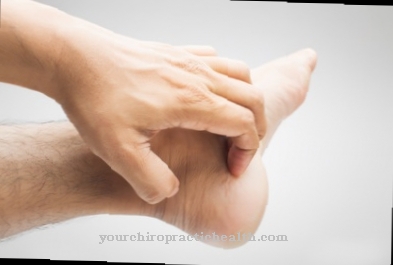The extracorporeal shock wave lithotripsy is a common method today for breaking up urinary, gall, kidney and salivary stones.
The high-energy shock waves (sound waves) for shattering the stones are generated outside the body (extracorporeal) and focused on the stone. In the event of success, the remains of the "shattered" stones can be excreted naturally, which saves the patient a surgical procedure with an inpatient stay and the associated risks.
What is extracorporeal shock wave lithotripsy?

Special feature of extracorporeal shock wave lithotripsy (ESWL) is the generation of pressure waves outside the body. In contrast, there is also intracorporeal lithotripsy, in which the shock waves are generated by an endoscopically inserted probe.
By far the most common application of ESWL concerns the disintegration of urinary and kidney stones. The procedure is also suitable for treating gallstones and salivary stones if the consistency of the stones meets certain conditions. The ESWL was developed by Dornier System GmbH, Friedrichshafen, and made ready for clinical application for the first time in 1980 in cooperation with the Großhadern Clinic, Munich. The devices for generating extracorporeal shock waves have meanwhile changed significantly in the direction of efficiency and lower operating costs.
Overall, the ESWL has established itself as the standard procedure for the non-invasive removal of urinary and kidney stones. The high-energy, short-pulsed shock waves are aligned in such a way that they use a relatively large entry surface on the skin and only converge concentrically in the body in the stone to be destroyed and develop their effect. The skin entry point and the tissue immediately below it survive the passage of the pressure waves largely unharmed.
Function, effect & goals
The main areas of application are in the destruction of kidney and urinary stones. In far fewer cases, gall and salivary stones are also treated. Modern devices can also be used to treat limescale deposits on joints such as: B. for the treatment of the so-called calcified shoulder (tendinosis calcarea).
For some years now, ESWL has also been used to treat badly healing bone fractures or osteotomies (pseudarthroses). For the exact localization of the stones, the lithotriptors are equipped with a special X-ray and an ultrasound device, which allow the patient or the shock wave generator to be positioned in such a way that the stone is exactly (to the millimeter) in the focus of the shock wave. The generation of shock waves takes place according to different physical-technical principles depending on the device type.
A distinction is made between electromagnetic, electrohydraulic and piezoelectric generation of shock waves. During the treatment it is important that the pressure waves transfer from the pressure wave generator into the body as smoothly as possible. This is achieved through good body contact with the silicone-wrapped water bubble of the shock wave generator at the entry point of the pressure waves. The treatment is usually carried out under a slight analgesic, with no general anesthesia, and takes about 20 to 30 minutes.
During the treatment approx. 2,000 to 3,000 shock waves are generated, whereby the frequency can be adjusted to the individual heart rate in order to avoid possible cardiac arrhythmias. The shock waves are therefore usually emitted at a frequency of 60 to 80 pulses per minute. Experience has shown that a lower frequency of the above order of magnitude is more effective than a higher frequency of 120 shock waves per minute, because microscopic cavitation bubbles form after each shock wave, which should only disintegrate before the next shock wave, otherwise a large part of the energy the shock wave is absorbed by the bubbles and deflates ineffectively.
The focused shock waves generate small-scale pressure, tension and shear effects in the stones, which lead to the disintegration of the stones into small fragments. About 90% of the diagnosed kidney and urinary stones can be treated with lithotripsy, of which about 80% are successfully disintegrated. If a treatment does not have the desired effect, you can try again after waiting several days. During the treatment, the position of the stone to be treated is automatically checked by X-ray and ultrasound in order to ensure that the shock waves are always precisely focused on the stone. A hospital stay of one to two days is usually necessary. But there are also specialized practices that offer outpatient ESWL.
Risks, side effects & dangers
Contraindications to the use of extracorporeal shock wave therapy are given in patients who suffer from any form of anticoagulant or who are taking anti-coagulation medication to prevent thrombosis and strokes, as internal tissue damage can occur during treatment, which could then lead to complications.
Particularly large stones with a length of over 2.5 cm and stones that cannot be precisely located are not suitable for treatment with ESWL. Since ESWL is a non-invasive procedure, there are no risks associated with an operation, including minimally invasive procedures. Overall, the ESWL is the lowest risk procedure for the treatment of urinary, kidney, gallbladder and salivary stones. No chronic long-term damage is known to date.
The main risks of an ESWL are that e.g. B. with a kidney stone fragmentation usually a little kidney tissue is damaged, so that the urine can temporarily contain blood. The damaged kidney tissue regenerates within a few weeks and heals completely. Further risks are that the discharge of the stone fragments temporarily causes painful colic or that urinary congestion is caused, which requires drainage treatment. Renal colic occurs in approximately 30% of successfully treated patients.



























